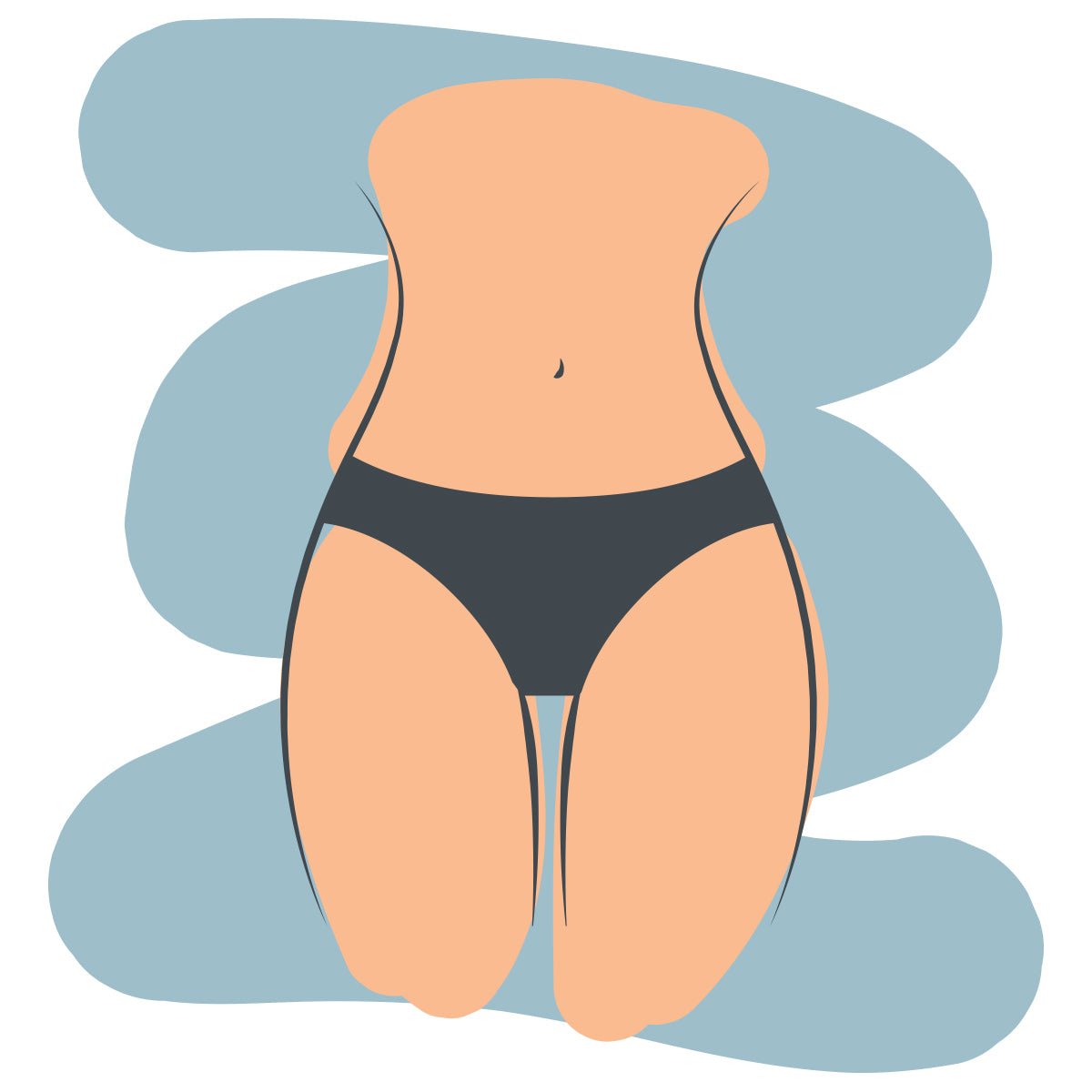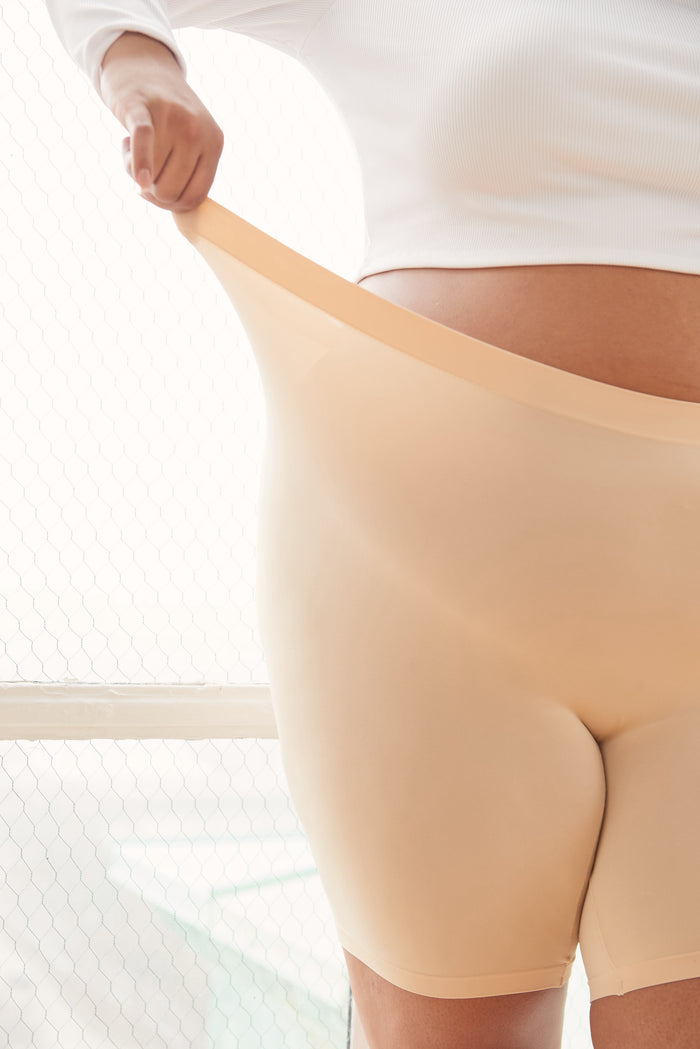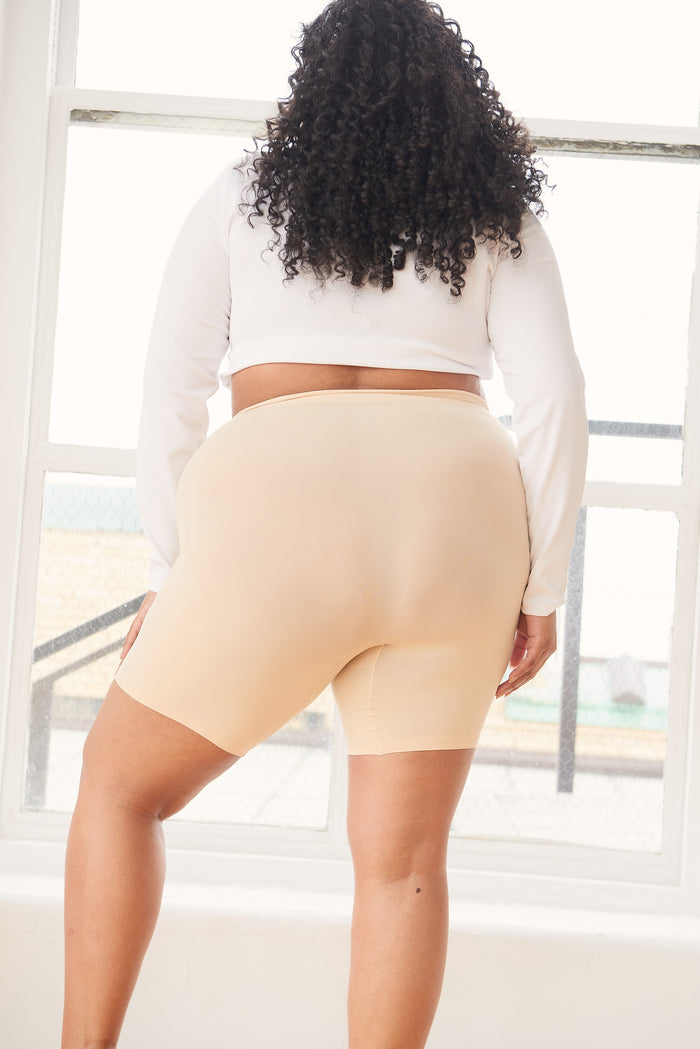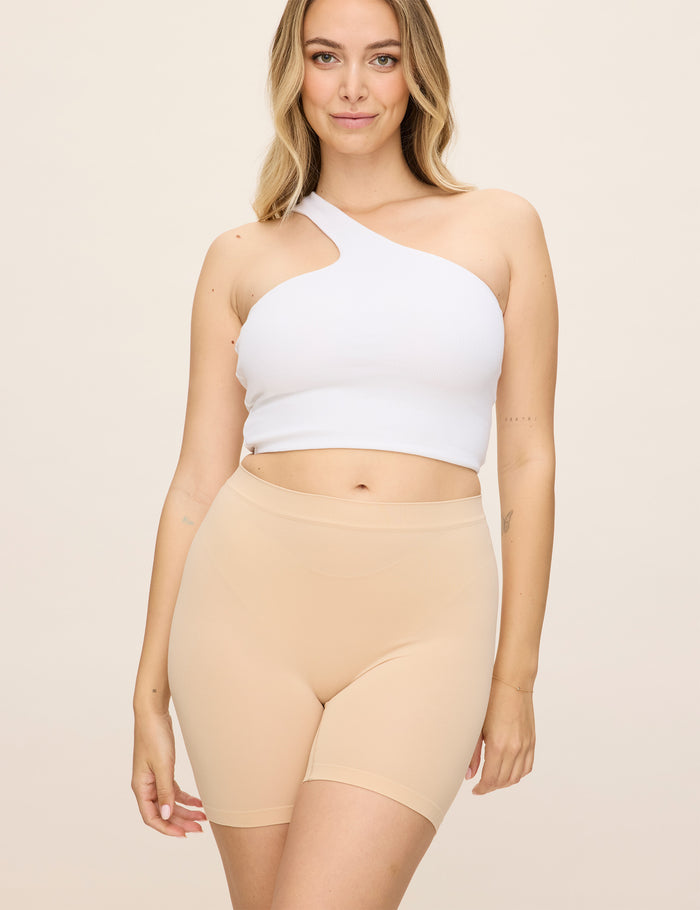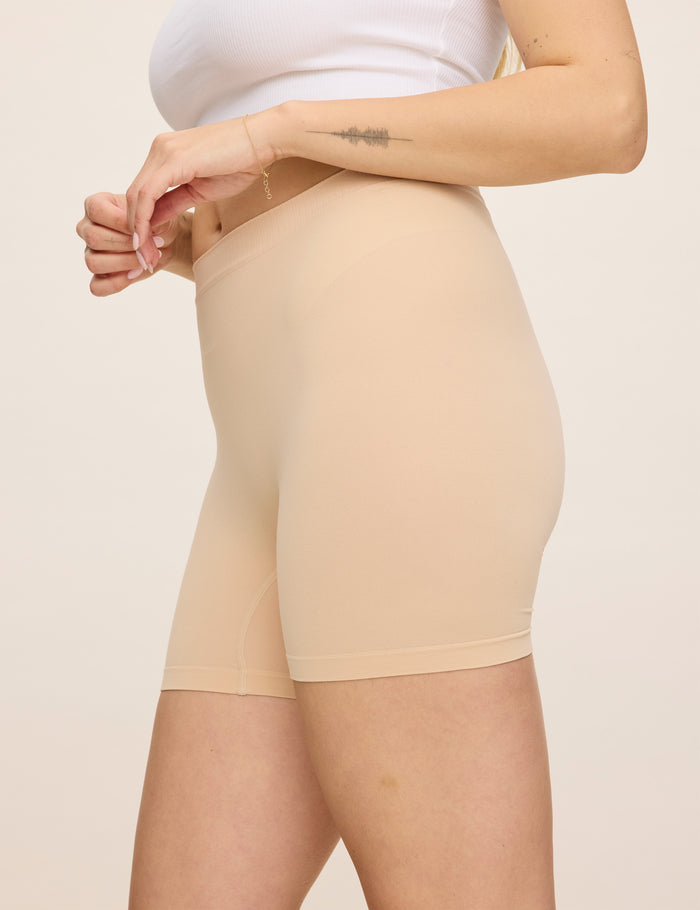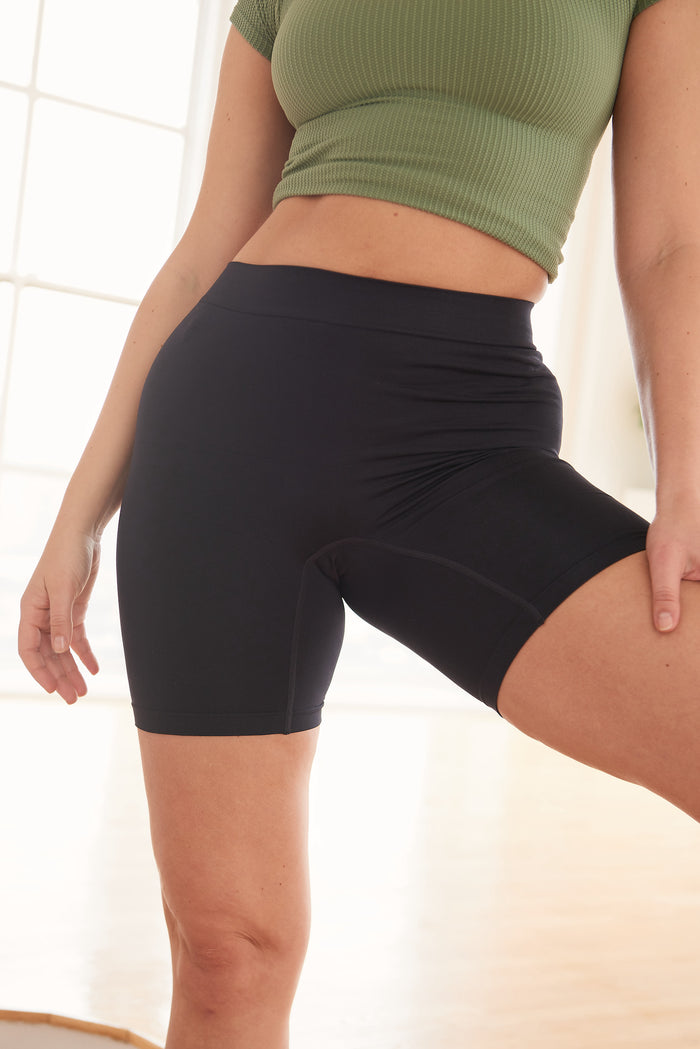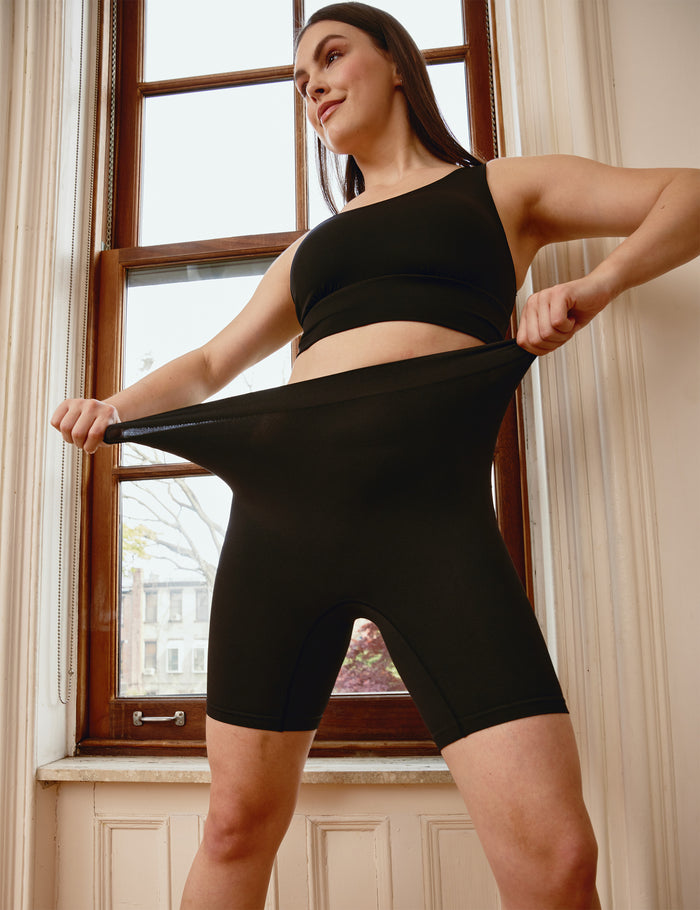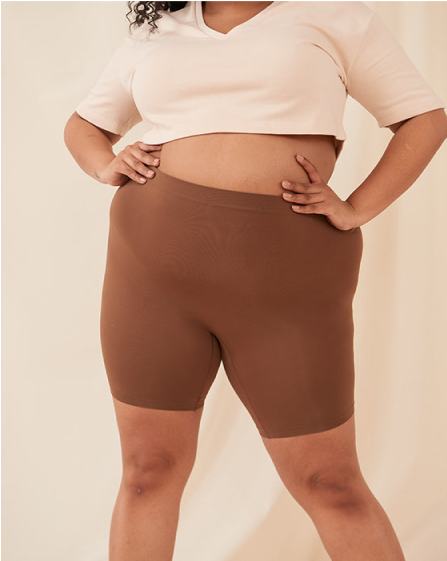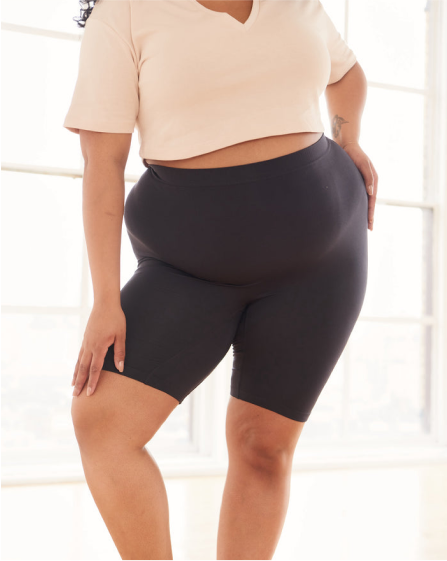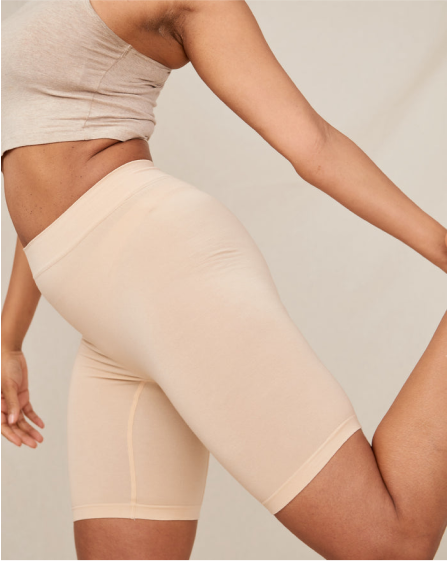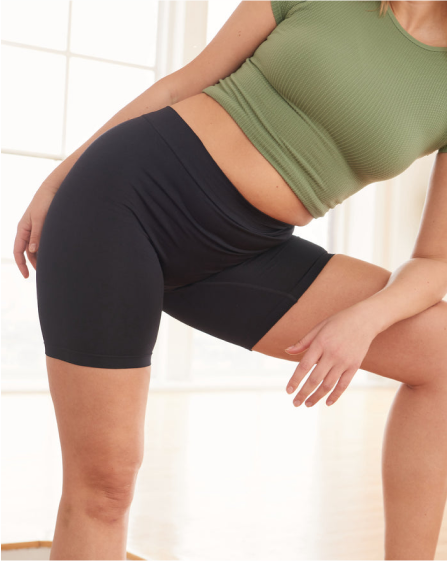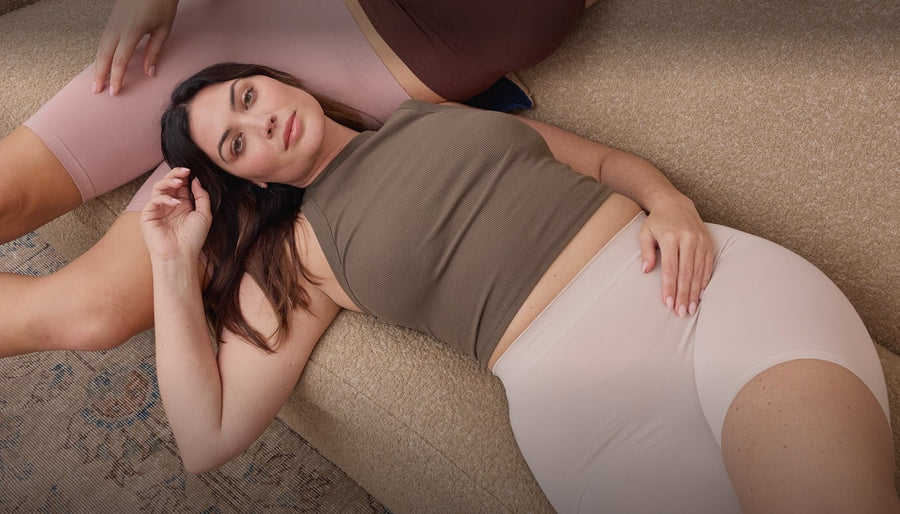Table of Content
Table of Content
Spend enough time on social media or browsing tabloids at the grocery store checkout line and you’ll be inundated with unrealistic beauty standards. While these harmful expectations come and go like fashion trends, there’s one that’s held on by the skin of its teeth: the thigh gap, otherwise known as the lack of space between one’s legs when their feet are touching.
The term was popularized in the 2006 to 2012 era, a time fuelled by Tumblr and the emaciated heroin-chic aesthetic led by supermodels Kate Moss and Sienna Miller. At the time, Tumblr was rife with pro-anorexia and thinspiration blogs, as well as the indie sleaze look that glamorized the pursuit of ultra-thinness. The phrase formally entered the public zeitgeist following the Victoria’s Secret fashion show in 2012, prompting public outcry from all corners of the industry warning of the dangerous obsession with thinness.
Often brought up when discussing inner-thigh chafing, the thigh-gap concept is the product of diet culture that tells people, especially women, that their bodies are never good enough. And unfortunately, the beauty trend is still going strong—the hashtag #thighgaps features videos with a combined total of more than 7 million views on TikTok alone.
But here’s the truth: not everyone is supposed to have a thigh gap. And we’re here to answer your burning questions about this toxic beauty ideal.
What is a thigh gap?
The thigh gap refers to the space between the thighs when standing up tall with the feet pressed together. In simple terms, it’s when someone’s inner thighs don’t touch.
Are thigh gaps genetic?
Yes, thigh gaps are primarily based on bone structure determined by genetics. What it comes down to is the width of your hips and position of your pelvis. People with wider hips tend to have natural thigh gaps, simply because their actual thighbones sit further apart from each other. Those with narrow-set hip bones will likely not have a thigh gap. Genetics also play a role in where we store fat—for some of us, that can be in the inner-thigh area, and there’s nothing wrong with that.
Are thigh gaps healthy?
Whether you have a thigh gap or not has no bearing on your internal health. It’s common to assume that a thigh gap is determined by physical fitness, body weight or diet—and we don’t blame you! It’s just one tactic of diet culture to target us, and another way for fitness gurus to sell products and training programs targeting an area of the body that lots of people are insecure about. Besides, having fat on your thighs (or anywhere on your body) isn’t a bad thing, nor is it a moral failing—it’s simply how your unique body is made up.
What isn’t healthy is calorie restriction, dieting and the pursuit of intentional fat loss in order to achieve a thigh gap (which isn’t even guaranteed since you can’t control where your body loses weight from). All of these behaviours can lead to moodiness, anxiety, depression, body dissatisfaction and disordered eating. No thigh gap is worth that.

Do thigh gap exercises work?
The short answer to this is no. Thigh gap exercises and workouts are examples of targeted fat loss, a method of training that has been proven time and time again to be ineffective on any part of the body. Furthermore, this obsession can cause a preoccupation with body size, leading to poor body image and, in some cases, eating disorders.
In our corner of the internet, we champion the belief that all bodies are good bodies—and that has no bearing on whether your thighs touch or not.
